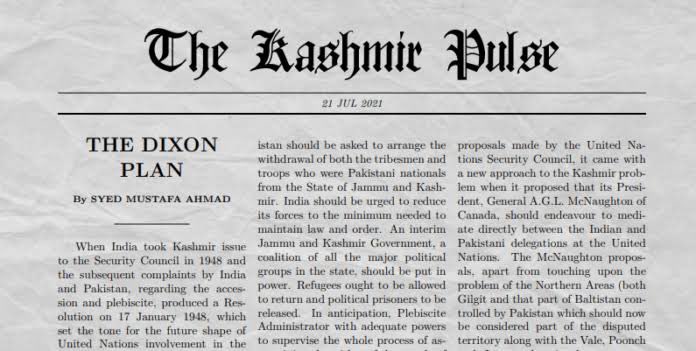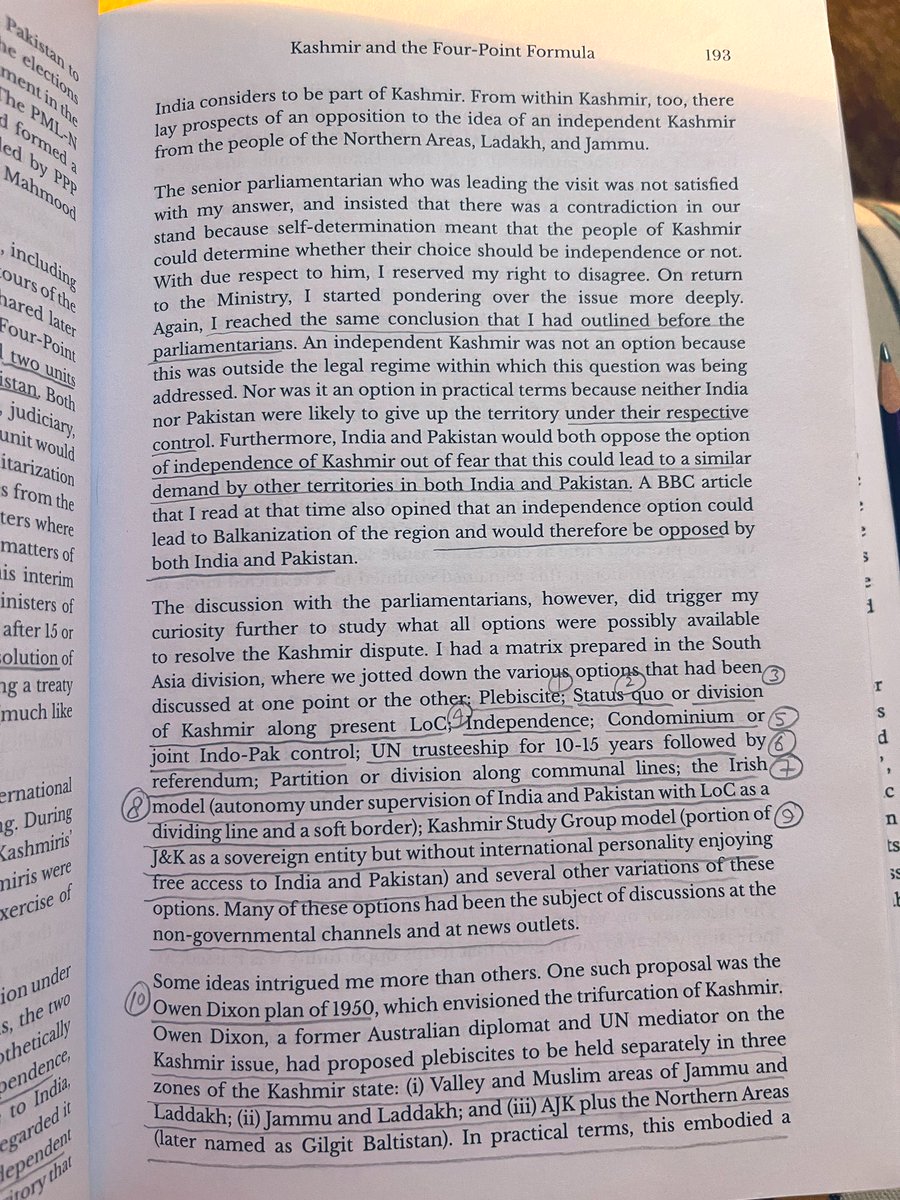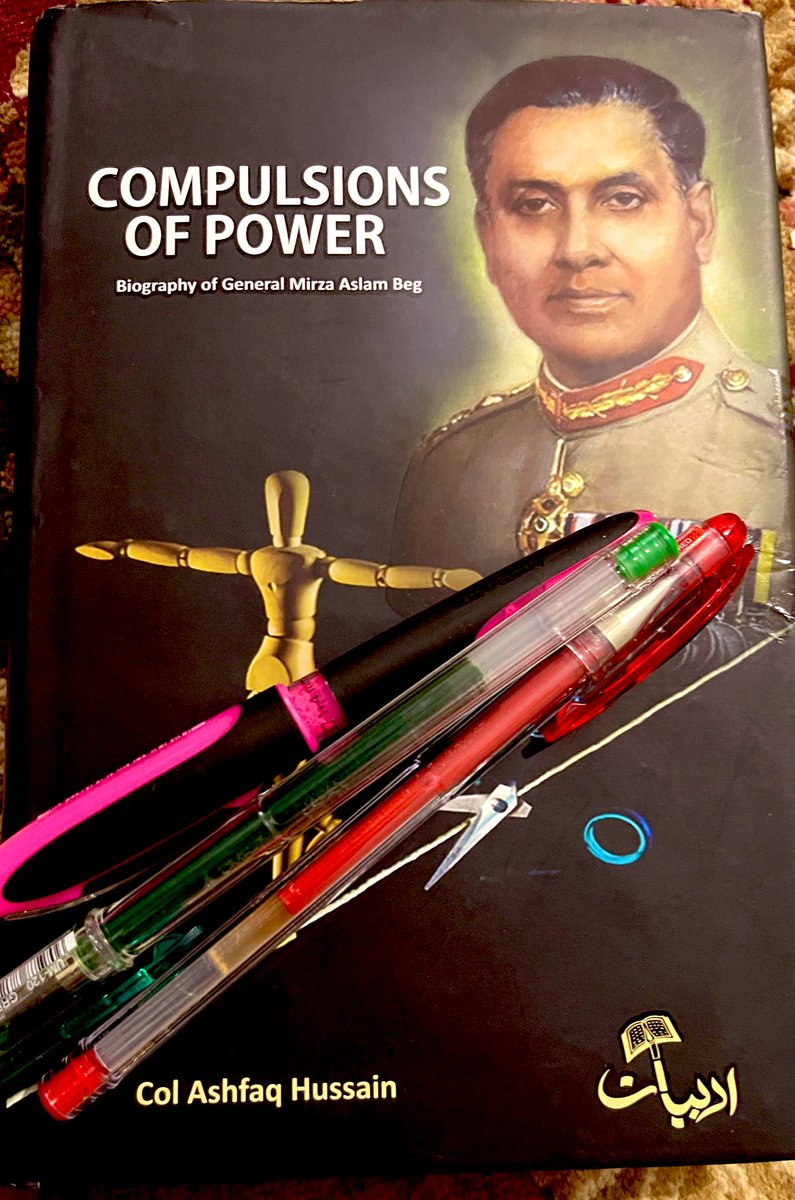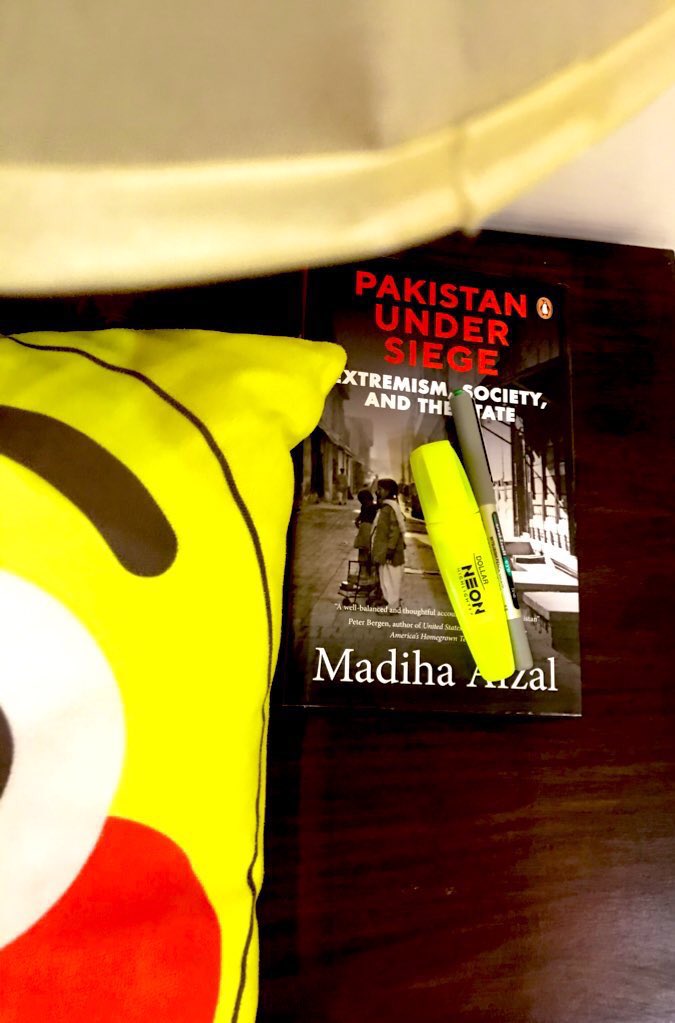Of the 12 options to resolve the Kashmir dispute; no proposal came as close to a feasible solution as the Four Point Formula by late Gen (retired) Pervez Musharraf. It will always form a good reference point for initial discussions, should an opportunity present itself +
1/17
1/17

Before we move to #FourPointFormula, lets briefly enumerate the 12 options which were possibly available to resolve the Kashmir dispute to-date: Plebiscite; Status Quo or division of Kashmir along present LoC, Independence; Condominium or joint Indo-Pak control;
2/17
2/17

UN trusteeship for 10-15 years followed by 6) referendum; Partition or division along communal lines; the Irish 7 (8 model (autonomy under supervision of India and Pakistan with LoC as a dividing line and a soft border);
tribuneindia.com/news/j-k/pak-n…
3/17
tribuneindia.com/news/j-k/pak-n…
3/17

Kashmir Study Group model (portion of J&K as a sovereign entity but without international personality enjoying Free access to India and Pakistan) & several other variations of these options.
Some ideas intrigued me more than others. One such proposal was
4/17
Some ideas intrigued me more than others. One such proposal was
4/17

was the Owen Dixon plan of 1950, which envisioned the trifurcation of Kashmir.
Owen Dixon, a former Australian diplomat and UN mediator on the Kashmir issue, had proposed plebiscites to be held separately in three zones of the Kashmir state:
5/17
Owen Dixon, a former Australian diplomat and UN mediator on the Kashmir issue, had proposed plebiscites to be held separately in three zones of the Kashmir state:
5/17

(i) Valley and Muslim areas of Jammu and Laddakh; (i) Jammu and Laddakh; and (il) AJK plus the Northern Areas (later named as Gilgit Baltistan). In practical terms, this embodied a division of state along the religious lines.
beta.dawn.com/news/845458/an…
6/17
beta.dawn.com/news/845458/an…
6/17

I remember as early as 1997, when the former Foreign Secretary Niaz A Naik, who was active in the Neemrana group, came to brief Foreign Secretary Shamshad about how he saw great promise in the Owen Dixon formula and how it could be further developed.
7/17
7/17

Another proposal worth noting evolved out of discussions in the US-based Kashmir Study Group, which came (to be known as the Chenab Formula. Conceived by Niaz A. Naik in his back-channel conversations with R.K. Mishra, the plan was to divide state along the Chenab river +
8/17
8/17

in a manner where India would retain the Hindu and Buddhist majority areas of Jammu and Laddakh, while the Northern Areas, AJK, the Valley, and Muslim majority districts of Jammu and Kargil region would join Pakistan.
9/17
9/17

Sartaj Aziz has made an apt comment in his book that the Chenab Formula basically converted a communal formula into a geographical formula, as most of the Hindu majority was east of the Chenab while Muslim majority districts were west of the Chenab.
10/17
10/17

Now let’s turn to #FourPointFormula
Based on the information that later became widely available, including what Khurshid Kasuri has documented in his book as "contours of agreement on Jammu & Kashmir", and the information shared later by Foreign Secretary Riaz M Khan,
11/17
Based on the information that later became widely available, including what Khurshid Kasuri has documented in his book as "contours of agreement on Jammu & Kashmir", and the information shared later by Foreign Secretary Riaz M Khan,
11/17

we would learn that the Four-Point Formula was a negotiated interim agreement that envisaged two units comprising roughly of areas controlled by India & Pakistan. Both units would have self-governance in finance, law & order, judiciary,elections,& other governance matters.
12/17
12/17
The defense of each unit would be the responsibility of India and Pakistan respectively. De-militarization of the area would be gradual, with a visible reduction of forces from the urban centers.
13/17
13/17
A joint mechanism was also envisaged for matters where there was inter-dependence of the two units, for instance on matters of travel, tourism, culture, trade and disaster management.
14/17
14/17
This interim agreement was to be monitored annually by the foreign ministers of India and Pakistan, and the arrangements would be reviewed after 15 or 20 years.
15/17
15/17
Khurshid Kasuri claims in his book that after the resolution of the Kashmir dispute, durable peace was to be sealed by signing a treaty of peace, security and friendship between the two countries (much like France and Germany did after the Second World War).
16/17
16/17

Reference: Few articles from different newspapers are already cited above and rest is taken from
Chapter 14, “Kashmir and Four Point Formula” of book #SiplomaticFootprints authored by @aizaz1101
17/17

Chapter 14, “Kashmir and Four Point Formula” of book #SiplomaticFootprints authored by @aizaz1101
17/17


• • •
Missing some Tweet in this thread? You can try to
force a refresh








